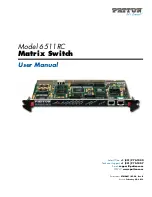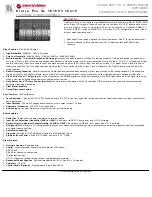
Chapter 3: Featuring Configuration – Web UI
Featuring Configuration – Web UI
NGSME16T2H User Manual | 125
MVR (Multicast VLAN Registration)
MVR is shot of Multicast VLAN Registration. The MVR is a protocol for layer 2
network that enables multicast traffic from a source VLAN to be shared with
client/subscriber VLANs. MVR is typically used for IPTV-like service. In non-MVR
environment, the IPTV source to different VLAN would be copied multiple copies
based on how many client/subscriber VLANs it would deliver.
The IPTV actually delivers the same source with multiple the same content IP
streams, the duplicated traffic occupies the bandwidth of the uplink port. Once the
traffic is heavy, some unexpected lost or lag appears. However, after MVR enabled,
the client/subscriber VLANs are registered to the same source VLAN, then there is
only one source stream will be delivered to the registered VLANs.
This page provides MVR related configurations.
Most of the settings are global, whereas the Router Port configuration is related to
the currently selected stack unit, as reflected by the page header.
The MVR feature enables multicast traffic forwarding on the Multicast VLAN. In a
multicast television application, a PC or a television with a set-top box can receive
the multicast stream. Multiple set-top boxes or PCs can be connected to one
subscriber port, which is a switch port configured as an MVR receiver port. When a
subscriber selects a channel, the set-top box or PC sends an IGMP join message to
Switch A to join the appropriate multicast. Uplink ports that send and receive
multicast data to and from the multicast VLAN are called MVR source ports.
















































